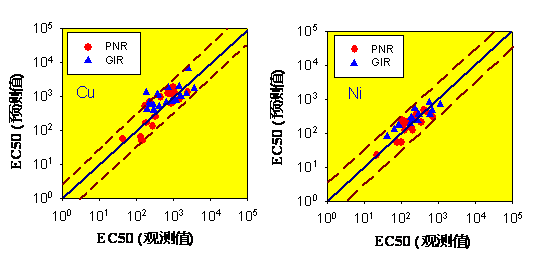Assessing environmental risks of metal contamination in soils is a complex task because the biologically effective concentrations of metals in soils vary widely with soil properties. Almost all regulatory guidelines are based upon total or dissolved metal concentrations even though it is widely recognized by regulators, industry practitioners, and scientists that these measurements do not accurately reflect the bioavailability and risk of metals. Toxicity data for microorganism in soil or in soil less cultures have been described with ion competition models, however these models disregard electrostatic and osmotic effects which are known to affect ion sorption and toxicity.
Using nineteen European soils with diverse characteristics, this study evaluated the factors that influence the toxicity of soil Cu or Ni to soil ecosystem functional rate (potential nitrification rate and glucose - induced respiration). The model developed provides a robust mechanistic framework to assess metal ecotoxicity and predicts critical metal concentrations linked to microbial effects--- the journal-reviewer describing the study as “thorough, novel, and well-presented piece of work, which is a natural successor to these published by the translation to soils and the microbial environment. The authors have established strong relationships in plants and both soils and solutions to characterised dosing of metals…”.图片.bmp
|

| |
| Cu and Ni toxicity to microbial processes in soils | |
| |
